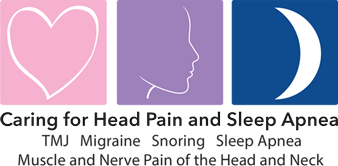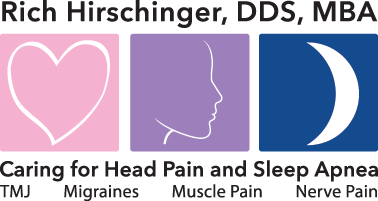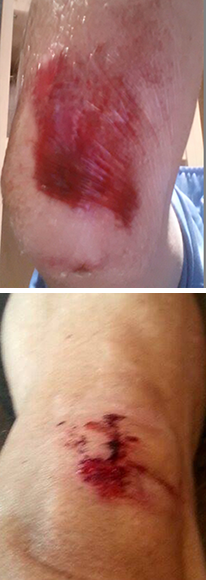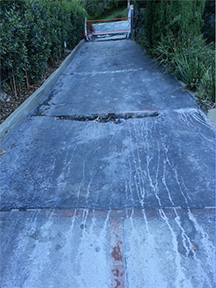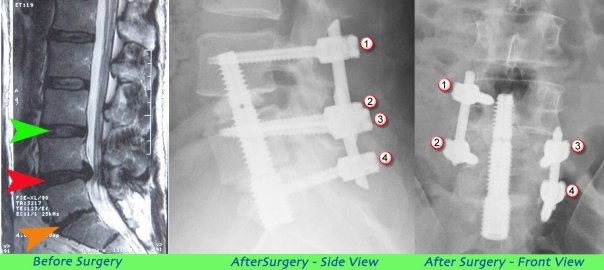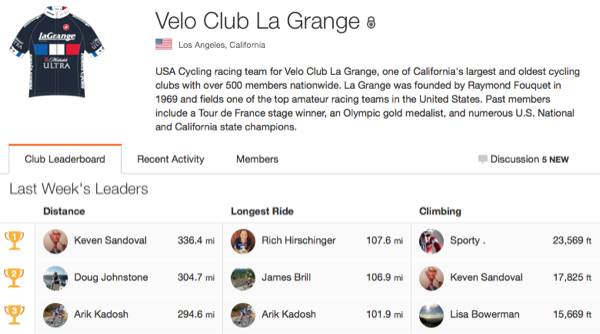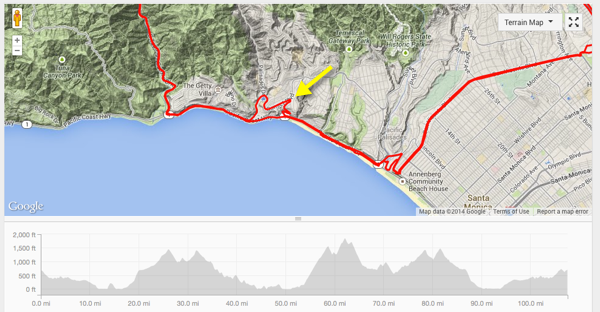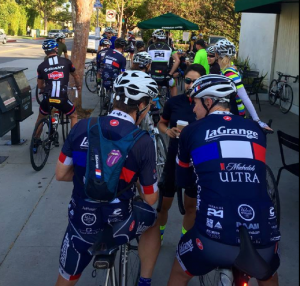
This was taken last week at the start of the NOW ride. I’m easy to spot. I’m wearing the Camelbak
This blog post is about my last road bike ride. Yes, my last ride. The post was inspired by a fellow cyclist who approached me after a very fast road bike ride with a group of about 50-60 cyclists. It was the weekly NOW ride, which stands for “No Opportunity Wasted” The ride is on Saturday’s and it leaves from a local coffee shop in Santa Monica, California, and it rolls out to Trancas in Malibu on Pacific Coast Highway, which the locals call PCH. The ride is very fast, and you need to keep pace by staying within a few inches of the rider in front of you or you lose the draft effect. If you don’t keep pace you sometimes get called out by other riders for not holding the wheel of the rider in front of you. It is a ride for experienced cyclists only, due to the speed and intensity.
About halfway to Trancas is Pepperdine Hill, which is a hill that tends to split the group since not everyone is a strong climber. I was riding very strong today, and was able to stay with the lead group. I was helped by a traffic light at the top of the hill, and caught up with the very fast riders at the light. I was then able to ride with the main group over the undulating road along the Southern California coast all the way to the gas station at Trancas, which is about 20 miles from the start. We rest, hydrate, and refuel at the gas station for about 15 minutes before heading back along the coast to Santa Monica. The initial pace on the return to Santa Monica was very reasonable until we reached PCH after leaving the Malibu Colony, and then pace was increased again. And, again, I was able to ride with the lead group all the way to the parking lot at Temescal Canyon in Santa Monica. The fast part of the ride was done, and then we crossed under PCH via a tunnel, and climbed a short hill to get up to Ocean Avenue, which overlooks the Pacific Ocean in Santa Monica.
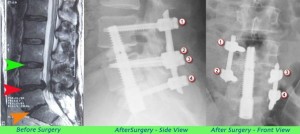
This is my double spinal fusion. The left side shows the herniation of L4-L5, and the collapse of L5-S1. The middle and right images are the spinal fusion screws.
I was on Ocean Avenue when a cyclist approached me, and blatantly told me that I should not be riding a road bike with a Camelbak. I asked him why, and he said because it makes the other riders nervous. I asked why. He said it was because Camelbaks are only for mountain biking, and it is a sign to other riders that I don’t belong on the road. He told me I should only use water bottles like all other road cyclists. He asked me if it is “that hard to bend a little bit down and grab a road bottle?” He then started to repeatedly reach down, and remove and replace his water bottle from the bottle cage. I responded, “actually, yes, that is difficult for me since I have had a double spinal fusion in my lower back.” When most people hear this, they make some type of comment that it is great that I’m out riding my bike, and they also usually ask if I ride with pain. But, no, not this person, whom I will hereinafter refer to as the Judge. The Judge, after hearing I had a double spinal fusion, said, “then you should not be riding a road bike.” I asked him if he ever saw me make a bicycle move that was dangerous and put others in jeopardy? The Judge responded, “no but I will pay attention to you next week.”
A Camelbak is safer than a water bottle. I don’t have to reach down and take a bottle out of a holder at 30 miles per hour, take a sip and then reach down and replace the bottle into its cage. A water bottle occasionally comes out of its cage and falls into the roadway, which is then a dangerous hazard that can cause a whole group of cyclists to crash and injure themselves. I drink more with a Camelbak than my friends who use water bottles since it is more convenient to sip from a hose, which is a few inches from my face, than to reach down and grab a bottle. And, for me, a Camelbak is painless whereas a water bottle causes pain. I like pain but only pain from the soreness that comes from a good workout.
The Judge’s attitude offended me for several reasons. The Judge did not accept the fact that I was different than him. The Judge did not accept the fact that I did not conform to the norm. The Judge was judging me based on my appearance, and not my performance. When you really think about it, it is a form of discrimination, and I was offended. Several other people heard the exchange and told me to “consider the source” but I want to try to turn this into a life lesson. A teaching moment.
What is it about some people that they cannot accept others who are different than the norm? What is it about some people who judge people based on how they look, how they dress, who they love, who they identify with? Who are they to be judge and jury to say what is socially acceptable? Would the Judge reject his child if his child was gay, lesbian, transgender, bisexual, asexual, etc? My guess is yes since that is not the norm. If someone like the Judge can’t understand why I have to be different, why I don’t use what the pros use, why I have to accommodate to my personal situation even after hearing a very valid and reasonable explanation, then the Judge and people who think like him need psychological help since it is they who are the source of any problem instead of the person who is different.
Be different. Be yourself. Do what makes you happy. Be your own person. Don’t let people like the Judge change who you are.
And, yes, I’m still going to ride my road bike. My next road ride is tomorrow. This blog post simply refers to my “last ride” as in my “most recent” ride. It’s all about semantics. See you on the road.
Here is the link to the ride on Strava. You can see I set several PR’s (personal records) for me, which means that I was riding fast compared to my past rides. https://www.strava.com/activities/314984868 You can follow me on Strava by clicking this link https://www.strava.com/athletes/3477463
*And don’t let a dentist ever grind or adjust your teeth, or have you wear a dental appliance 24 hours a day for several months since it is not part of any accepted treatment protocol for chronic head and neck pain. This has nothing to do with this post but it is good to remember since many dentists think otherwise. See an orofacial pain specialist by finding one at www.AAOP.org.
Rich Hirschinger, DDS, MBA
Diplomate American Board of Orofacial Pain
Fellow American Academy of Orofacial Pain
Clinic Director UCLA Orofacial Pain and Dental Sleep Medicine
888.981.8981
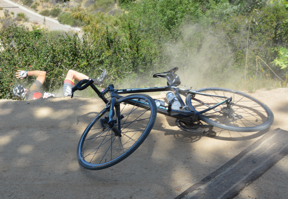 ing involved in a bike accident, any layman can do a quick assessment of the injured person to check for a sign of a possible brain concussion.
ing involved in a bike accident, any layman can do a quick assessment of the injured person to check for a sign of a possible brain concussion.